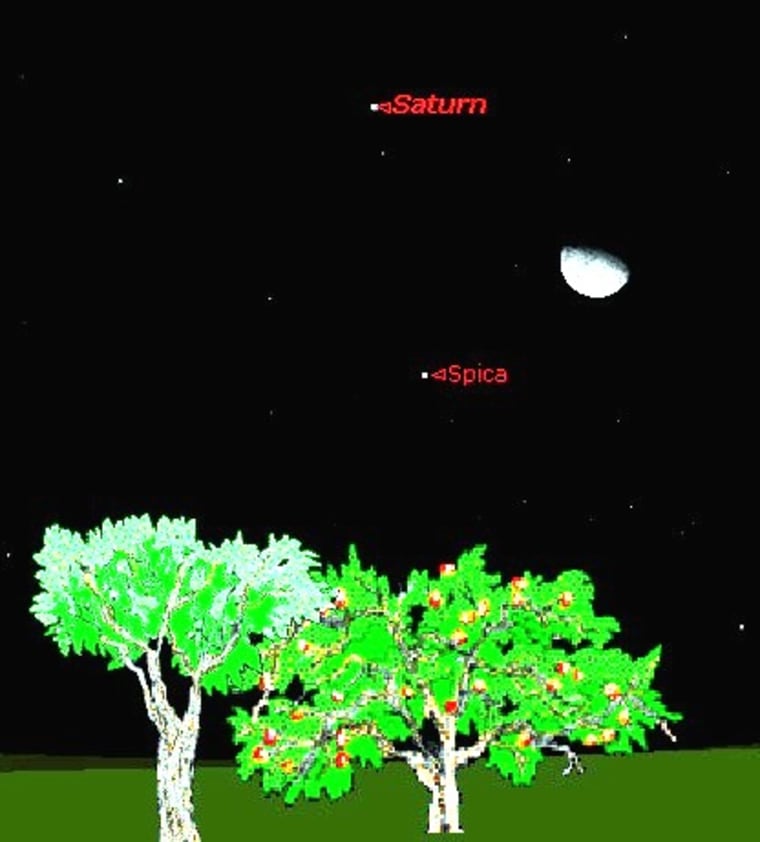Skywatchers who are out and about past the witching hour of midnight Monday will have an interesting celestial array to admire: a cosmic triangle created by the moon, the planet Saturn and a bright star.
To stargazers, the sky configuration will initially resemble a rather large isosceles triangle low in the east-southeast sky, weather permitting.
The triangle's three points begin with the moon — which should be not quite two-thirds illuminated in its waning gibbous phase.
Up next is Saturn, appearing as a sedate, yellowish-white glow well above and to the left of the moon. The bright, bluish star Spica completes the triangle at an end point below and to the left of the moon, in the zodiacal constellation of Virgo.
The moon, of course, appears to pass Spica every month as it crosses the sky, but at this particular moment Saturn happens to be nearby, too, forming a sort of "Saturn Triangle."
This sky map of the Saturn Triangle shows how it will appear to stargazers with clear, dark skies early Tuesday.
What makes this triangle isosceles (with two sides of equal length) is that Saturn will be located at an equal distance from both the moon and Spica: about 8 degrees of the sky.
Astronomers measure distances between objects in the night sky based on degrees of arc. For example, your clenched fist held at arm’s length will cover about 10 degrees.
So the Saturn-moon and Saturn-Spica sides of the triangle will be slightly less than a fist’s width in length. The side of the triangle from the moon to Spica will measure just 6 degrees.
By around 5:30 a.m. ET Tuesday, just as dawn is about to break on the eastern U.S. coast, the trio will have moved to a point nearly halfway up in the sky toward the south. But the triangle will also look a bit different.
Saturn is currently 859 million miles from Earth and will not change its position relative to the background stars during the course of a single night. But the moon is only 228,700 miles away, and as a result will slowly shift its position to the east during the course of the night.
In fact, less than six hours after the triangle’s first appearance, the moon will have appeared to move about 3 degrees closer to Spica, causing the triangle to become narrower.
(The moon appears to move east against the background stars at roughly its own apparent width — half a degree — per hour.)
Astronomers measure the brightness of objects in the sky using a magnitude scale. The lower the number, the brighter an object appears. The full moon, for example, has a magnitude of about -12.7 on this scale.
Saturn, at a magnitude of 0.6, is roughly a half magnitude brighter than the star Spica.
If you have a telescope, check out Saturn's rings. Just 16 months ago, Saturn's rings were all but invisible to us because they were turned edge-on (or nearly so) as viewed from Earth. Now, however, they are tilted just over 10 degrees toward us and are readily seen if you are using a magnification of at least 30-power.
Joe Rao serves as an instructor and guest lecturer at New York's Hayden Planetarium. He writes about astronomy for The New York Times and other publications, and he is also an on-camera meteorologist for News 12 in Westchester, N.Y.
